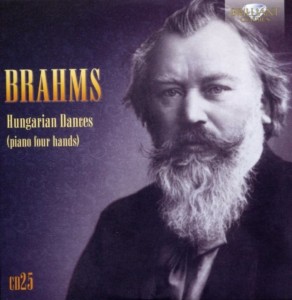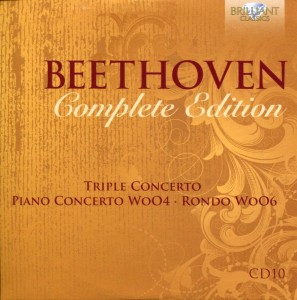 Today’s CD of Hungarian Dances written for four-hand piano was recorded in 1956 and features the legendary Alfred Brendel as one pair of hands and Walter Klien as the other pair.
Today’s CD of Hungarian Dances written for four-hand piano was recorded in 1956 and features the legendary Alfred Brendel as one pair of hands and Walter Klien as the other pair.
Musically, it doesn’t get much better than this. The performances are sublime.
Sonically, there’s a lot of tape hiss. Not to the point of distraction. But one can definitely tell this recording is nearly 60 years old.
There are 21 tracks on this, the 25th of 58 CDs in the Brahms Complete Edition from Brilliant Classics.
I’m going to award this a Favorite Brhams CD designation for two reasons:
1. Alfred Brendel
2. It makes Brahms sound livelier and more interesting than he has been to this point
This music is perfect for passive listening while writing, reading, or thinking. And it sounds good enough for active listening as well. I’m really enjoying these little snippets of music.
From its entry on Wikipedia:
The Hungarian Dances (German: Ungarische Tänze) by Johannes Brahms (WoO 1), are a set of 21 lively dance tunes based mostly on Hungarian themes, completed in 1869.
They vary from about a minute to four minutes in length. They are among Brahms’s most popular works, and were certainly the most profitable for him. Each dance has been arranged for a wide variety of instruments and ensembles. Brahms originally wrote the version for piano four-hands and later arranged the first 10 dances for solo piano.
Only numbers 11, 14 and 16 are entirely original compositions. The most famous Hungarian Dance is No. 5 in F♯ minor, but even this dance was based on the csárdás by Béla Kéler titled “Bártfai emlék” which Brahms mistakenly thought was a traditional folksong.
If these were composed in 1869 (the IMSLP web site suggests a much later date), then Brahms was 36.

